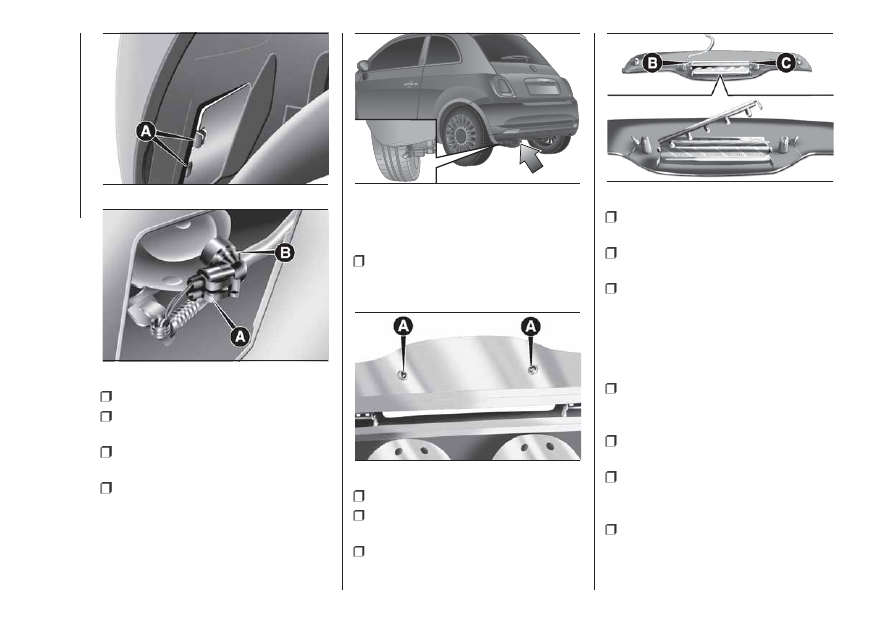Fiat 500L Living (2019 year). Manual - part 8

release the bulb and replace it;
reinsert the bulb/bulb holder unit B
by turning it clockwise;
reconnect the electrical connection
A;
refit the flap and check that it is
correctly locked.
If the flap is not present, access the
bulb holder through the lower part
of the rear bumper fig. 103 to replace
the reversing and rear fog light.
THIRD BRAKE LIGHTS
To replace the bulb proceed as follows:
remove the two guard caps and
unscrew the two fastening screws A fig.
104;
remove the assembly;
disconnect the electrical connector
B fig. 105;
press the retaining device C fig. 105
and open the bulb holder;
remove the press-fitted bulb to be
replaced and replace it;
close the bulb holder making sure
the retaining device is correctly locked;
screw in the two fastening screws
and reinstall the guard caps.
NUMBER PLATE LIGHTS
To replace the bulbs, proceed as
follows:
apply pressure to the point shown
by the arrow fig. 106 and remove
the lens;
change the bulb, releasing it from
the side contacts;
fit the new bulb and make sure that
it is correctly clamped between the
contacts;
then refit the lens.
101
F0S0581
102
F0S0582
103
F0S0674
104
F0S0058
105
F0S0059
120
IN
AN
EMERGENCY